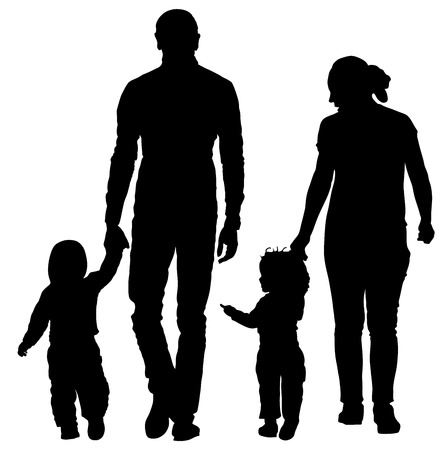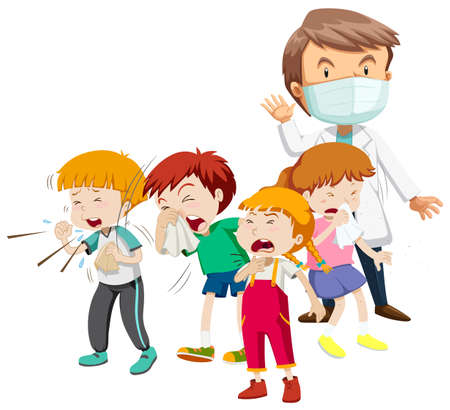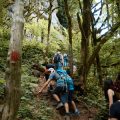1. Understanding Altitude Sickness
If you’re planning a family hiking adventure in the mountains, it’s important to understand altitude sickness—especially for kids and teens. Altitude sickness, also called acute mountain sickness (AMS), happens when you ascend to high elevations too quickly and your body doesn’t get enough oxygen. At higher elevations, the air pressure drops and there’s less oxygen in each breath, which can affect anyone but tends to hit younger hikers harder because their bodies are still developing.
Kids and teens might experience a variety of symptoms that can look different from adults. Common signs include headache, nausea, vomiting, dizziness, fatigue, loss of appetite, trouble sleeping, and sometimes irritability or mood changes. It’s easy to mistake these symptoms for simple tiredness or even car sickness, so staying alert is crucial when hiking above 8,000 feet.
The science behind altitude sickness is all about how our bodies react to having less oxygen available. When we breathe in thinner mountain air, our bodies have to work harder to deliver oxygen to muscles and organs. The brain responds by triggering faster breathing and increasing heart rate. For kids and teens—who may push themselves physically or not always tell you how they feel—the risk can be especially sneaky. Understanding the basics helps parents know what to watch for and how to keep the whole family safe on high-elevation hikes.
2. How High is ‘High’? Knowing Risky Elevations
When planning a family hike, especially with kids and teens, understanding what counts as “high elevation” is crucial for keeping everyone safe. Altitude sickness can affect anyone, but children and teenagers may be more vulnerable because their bodies are still developing. In general, the risk for altitude sickness starts to increase at around 8,000 feet (about 2,400 meters) above sea level. However, symptoms can appear at lower elevations for some people.
Recognizing Risky Elevation Zones
The following table breaks down typical elevation ranges and the associated risk levels for families:
| Elevation Range (feet) | Risk Level | Common Symptoms |
|---|---|---|
| Below 5,000 | Low | Minimal risk; rare symptoms |
| 5,000–8,000 | Mild to Moderate | Mild headache or fatigue in sensitive individuals |
| 8,000–10,000 | Moderate to High | Increased risk for headaches, nausea, dizziness in kids/teens |
| Above 10,000 | High | Greater chance of acute mountain sickness (AMS), especially if ascending rapidly |
Popular US Hiking Spots and Their Elevations
If you’re hiking with your family in the US, you might visit some famous high-altitude destinations. Here are a few examples to help put things into perspective:
| Hiking Location | State | Starting Elevation (feet) | Peak/Trail Elevation (feet) | Risk Zone? |
|---|---|---|---|---|
| Rocky Mountain National Park (Bear Lake Trailhead) | Colorado | 9,450 | Over 12,000 on some trails | Yes – Moderate to High Risk |
| Mammoth Lakes Area (Crystal Lake Trail) | California | 8,900 | Over 10,000 on summit trails | Yes – Moderate to High Risk |
| Pikes Peak Summit Hike (Barr Trail) | Colorado | 6,700 | 14,115 at summit | Yes – High Risk near summit |
| Lassen Volcanic National Park (Bumpass Hell Trail) | Northern California | 8,000+ | Around 8,500 | Mild to Moderate Risk |
Cultural Note: Comparing Local Experiences
If your family lives at sea level—like in Miami or New York City—even hikes that start at 5,000 feet can feel challenging and trigger symptoms faster than for folks from Denver or Salt Lake City who are used to higher altitudes. Always factor in where you live when gauging “risky” elevations for your family adventure.

3. Signs to Watch for in Kids and Teens
When hiking at high elevations with your family, it’s crucial to know the warning signs of altitude sickness—especially since kids and teens can show symptoms differently than adults. Altitude sickness, also called Acute Mountain Sickness (AMS), often starts with mild symptoms but can quickly become serious if ignored. Recognizing the early signs means you can act fast and keep your young hikers safe.
Common Symptoms Across All Ages
Look out for headaches, nausea, vomiting, dizziness, and fatigue—these are classic signals of altitude sickness that can affect both kids and teens. You might also notice they lose their appetite or complain about feeling “off” without being able to explain exactly why. In some cases, sleep disturbances like trouble falling or staying asleep can be an early indicator.
How Younger Kids Might Show Symptoms
With younger children, symptoms can be subtle or tricky to spot because they may not have the words to describe what’s wrong. Instead of telling you they feel nauseous, a toddler or young child might become cranky, lethargic, unusually quiet, or refuse to walk. Watch for unexplained crying, lack of interest in playing, or sudden mood swings. If a child who normally loves snacks refuses food or water, that’s a red flag too.
What to Look For in Teens
Teens are more likely to verbalize their discomfort but sometimes try to tough it out rather than speak up. Headaches and nausea are common complaints. Pay attention if your teen seems unusually tired, short of breath even on easy trails, or mentions vision changes like blurriness. Because teens may try to hide how bad they feel to avoid disrupting the group or seeming “weak,” check in frequently and encourage honest communication.
Serious Warning Signs: When to Take Action
If any family member—child or teen—shows confusion, difficulty walking straight, persistent vomiting, chest tightness, or trouble breathing at rest, these are medical emergencies. Descend immediately and seek professional help. Remember: when in doubt, it’s better to play it safe and head lower on the trail.
4. Prepping Your Family Before the Hike
Setting your family up for a successful high-elevation hiking experience starts long before you hit the trailhead. Pre-hike prep is essential, especially when kids and teens are involved. Here’s how to get everyone ready—physically and mentally—for the challenge of altitude.
Conditioning: Building Stamina and Strength
Kids and teens don’t need to train like athletes, but getting their bodies used to physical activity helps immensely. Incorporate regular walks, local hikes, or even bike rides into your family routine weeks before your trip. Gradually increase distance and elevation if possible. This steady conditioning builds endurance and gives everyone a feel for being active outdoors.
Packing Essentials: Gear That Matters
Smart packing can make or break a high-altitude adventure, especially when it comes to comfort and safety for younger hikers. Use the table below as a family-friendly checklist:
| Item | Why It Matters | Tips for Kids/Teens |
|---|---|---|
| Water Bottles/Hydration Packs | Staying hydrated reduces risk of altitude sickness | Let them pick their own fun bottle or pack to encourage drinking |
| Snacks (High-Energy) | Keeps energy up on longer hikes | Trail mix, granola bars, fruit leathers—pack favorites! |
| Sunscreen & Hats | UV exposure increases with altitude | Remind frequent reapplication; choose hats they’ll actually wear |
| Layered Clothing | Weather changes fast at elevation | Base layer, fleece, windbreaker; let them help pick colors/styles |
| First Aid Kit (Kid-Friendly) | Treat minor scrapes, blisters, headaches quickly | Add familiar bandages or character-themed items for comfort |
| Sunglasses | Protects eyes from intense sun glare at altitude | Sports-style sunglasses fit better and stay put during play |
Acclimatization: Take It Slow and Steady
If you’re traveling from sea level or low elevation, plan to spend at least one night at a mid-level altitude before heading higher. Avoid packing too many activities into the first 24-48 hours. Encourage everyone to take it easy—play games, walk around town, or explore local parks rather than jumping right into strenuous hikes.
Cultivating the Right Mindset: Teamwork and Flexibility
Mental preparation is just as important as physical readiness. Frame the hike as a family adventure—not a race. Talk about possible challenges, like feeling tired or short of breath, and emphasize that it’s okay to take breaks or turn back if needed. Encourage kids and teens to listen to their bodies and speak up if they feel “off.” Remind everyone that teamwork matters more than reaching the summit.
5. On the Trail: Preventing and Managing Symptoms
Hydration: Your First Line of Defense
High elevation means drier air and faster dehydration, especially for kids who may not notice their thirst. Encourage everyone to drink water regularly—think “small sips, often” rather than waiting until someone feels thirsty. For teens carrying their own packs, remind them to check their bottles or hydration bladders frequently. Electrolyte tablets or low-sugar sports drinks can help replace salts lost through sweat, but water should be your primary source.
Pacing: Go Slow to Go Far
Altitude affects oxygen levels, so even short climbs can feel tougher than expected. Set a slow, steady pace that lets everyone talk without gasping. Use frequent breaks to rest and check in on how each family member feels—especially younger kids who might push themselves to keep up. Let the slowest hiker set the pace; this keeps group morale high and prevents anyone from feeling pressured.
Meals and Snacks: Fuel for Altitude Adventures
At altitude, appetites can dip, but regular eating is essential for energy. Pack easy-to-digest snacks like trail mix, granola bars, and fruit. Make mealtimes social—use them as natural pauses to observe everyone’s condition and mood. Avoid heavy, greasy foods that may upset sensitive stomachs at elevation.
Group Dynamics: Stay Together, Stay Safer
Stick together as a group, with adults spaced throughout—one leading, one sweeping the back if possible. Assign buddies so no one hikes alone or falls behind unnoticed. Kids and teens are more likely to speak up about symptoms if they feel supported and not singled out.
When to Turn Back: Knowing Your Limits
This is where parental judgment really matters. If anyone shows persistent headache, nausea, dizziness, or unusual fatigue, it’s time to descend—no summit or view is worth risking health. Make turning around a positive decision (“We’re smart hikers!”) rather than a disappointment. Always have a plan B for shorter routes or lower-elevation alternatives.
Parental Responsibilities: Model Good Behavior
Your kids will watch how you manage your own pacing, hydration, and attitude toward safety decisions. Be transparent about checking in with yourself and others. Normalize talking about symptoms early; treat concerns seriously so your young hikers learn that listening to their bodies is part of every outdoor adventure.
6. What to Do if Symptoms Appear
Step-by-Step Immediate Care for Altitude Sickness
If your child or teen begins to show signs of altitude sickness—like headache, nausea, dizziness, or extreme tiredness—it’s important to act quickly and calmly. Here’s what you should do right away:
Step 1: Stop and Rest
Immediately halt your hike. Find a safe spot where everyone can sit down and take deep, slow breaths. Encourage your child to rest and avoid any strenuous activity.
Step 2: Hydrate and Nourish
Offer water or a sports drink to help with hydration. Sometimes a small snack (like crackers or fruit) can also ease symptoms, especially if they haven’t eaten in a while.
Step 3: Descend if Possible
The most effective way to relieve altitude sickness is to go lower. If symptoms don’t improve after resting and hydrating, descend at least 1,000 feet (about 300 meters) as soon as possible—even if it means cutting your hike short.
Step 4: Monitor for Severe Symptoms
Watch for signs that things are getting worse: trouble breathing, confusion, loss of coordination, chest pain, or persistent vomiting. These can indicate serious conditions like High Altitude Pulmonary Edema (HAPE) or High Altitude Cerebral Edema (HACE).
When to Seek Emergency Help
If severe symptoms develop or if mild symptoms do not improve after descent and rest, seek medical attention immediately. Call 911 if you’re in the U.S. and need urgent help. Many national parks have ranger stations with emergency services—don’t hesitate to contact them if you’re on park grounds.
Emergency Tip
If cell service is spotty, consider carrying a satellite messenger device (like Garmin inReach or SPOT) when hiking in remote areas.
Local US Resources for Families Hiking at High Elevation
- National Park Service: Most national parks have first aid stations and trained rangers who can assist in emergencies. Look up the emergency numbers for the specific park before heading out.
- Children’s Hospitals: Major hospitals near mountain regions often have experience treating altitude sickness in kids; examples include Children’s Hospital Colorado or Primary Children’s Hospital in Utah.
- Wilderness Medicine Clinics: Some outdoor recreation hotspots offer walk-in clinics specializing in wilderness medicine—useful for non-emergency care.
- American Red Cross: The Red Cross offers first aid classes focused on outdoor safety—taking one as a family is a great way to prepare before your trip.
Remember:
Your best tools are prevention and preparation—but knowing how to respond can make all the difference for your family’s safety on high-elevation adventures.
7. After the Hike: Recovery and Learning
Once your family hike at high elevation is complete, it’s important to focus on post-hike care and turning the adventure into a learning experience for everyone. Here’s how you can support your kids and teens in recovery and grow together as a family hiking team.
Prioritize Rest and Hydration
After descending from higher altitudes, make sure everyone gets plenty of rest. Fatigue can linger even after you’re back at lower elevations, especially for kids and teens. Encourage drinking water throughout the rest of the day—rehydrating helps flush out any lingering effects of altitude and physical exertion.
Monitor for Delayed Symptoms
Keep an eye out for delayed symptoms of altitude sickness, such as headaches, nausea, or unusual fatigue. These can occasionally show up after the hike is over. If anyone feels unwell, don’t hesitate to take it seriously—rest, hydrate, and seek medical advice if needed.
Reflect as a Family Team
Take some time to talk about the hike together. Ask everyone what they enjoyed, what challenged them, and how they felt physically and emotionally during the adventure. This reflection can build confidence in younger hikers and help teens process their own limits and achievements.
Pro Tip: Keep a Family Hiking Journal
Start a journal where each member can jot down memories, lessons learned, or even sketches from the trail. Over time, this becomes not just a log but a source of shared wisdom for future trips.
Turn Experience Into Preparation
Use what you’ve learned to plan your next hike even better. Did certain snacks work well? Did someone need more layers? Make a checklist of gear or strategies to try next time. Invite kids and teens to help with planning—they’ll feel empowered and more invested in future adventures.
Celebrate Milestones Together
Whether it was reaching a new elevation record or overcoming altitude jitters, celebrate what your family accomplished! Recognition keeps motivation high and makes each person feel valued as part of your adventure team.
Treat every high-elevation hike as both an accomplishment and a learning lab for your family. With thoughtful recovery and honest reflection, you’ll be ready—and even more resilient—for your next mountain challenge together.


